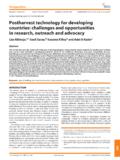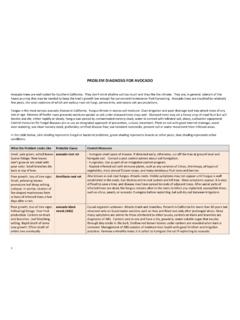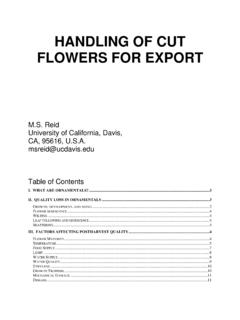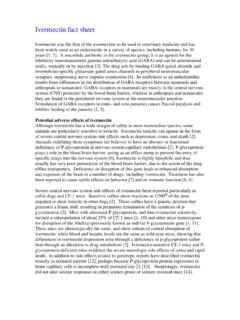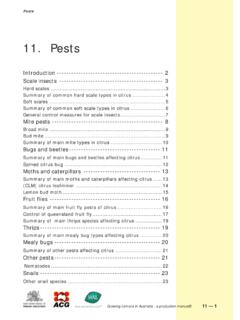Transcription of Problem Diagnosis Citrus 2-4-2011 final - UCANR
1 Citrus Problem Diagnosis 1 Citrus trees are well suited for Southern California. They don t mind alkaline soil too much and they like the climate. The major problems of backyard Citrus at this time are Citrus Leafminer, various honeydew secreting insects, and various fungal diseases. Details are in the table below. Every year we receive many Hotline calls/emails from people who fear an infestation of Asian Citrus Psyllid (ACP) which has caused Orange County Citrus to be quarantined. Most often, the culprit turns out to be Citrus Leafminer. If Citrus leaves are twisted, crumpled, and deformed, the most likely cause is Citrus Leafminer, but see the table below for more information on these two pests. Honeydew secreting pests include various soft scales, mealybugs, aphids, and some others, most of which are protected by ants.
2 One of the best prevention methods is to exclude ants from the canopy of the tree. See the table below for further information. Fungus thrives in excess soil moisture and is very difficult to eliminate. It is best to prevent fungus or at least reduce populations by preventive measures; avoid over irrigation, poor drainage, and wetting of the trunk. Plant on soil with good internal drainage; use clean nursery stock, preferably certified disease free; use resistant rootstocks; prevent soil or water movement from infested areas. In the table below, green shading represents insects or other pests, pink shading represents fungal or bacterial problems, blue shading represents other conditions. What the Problem Looks Like Probable Cause Control Measures New Citrus leaf growth in spring and fall are twisted, crumpled, and deformed.
3 Deformed leaves have tunnels left by Citrus Leafminer larvae. Citrus Leafminer Place pheromone traps near but not in Citrus trees, just before the new growth flush occurs in spring and in fall. Citrus Leafminers do not pose a threat to any but the very youngest Citrus trees. Mature trees can weather a Citrus Leafminer invasion, although the new leaves are unsightly. Twisted deformed leaves, no tunnels in damaged leaves. Asian Citrus Psyllid The Asian Citrus Psyllid (ACP) has established only a small presence in Orange County to date. Twisted leaves are almost always a sign of Citrus Leaf Miner. To view ACP pictures and learn about the pest, read the UC IPM Publication on ACP. If you conclude that you do have ACP on your Citrus , you can visit the California Department of Agriculture website to report your findings and receive further instruction.
4 Citrus Problem Diagnosis 2 What the Problem Looks Like Probable Cause Control Measures Round, red brown scales on fruit, leaves, and twigs. Leaves may yellow and drop and twig dieback may occur. Most visible in late summer and early fall. California red scale An armored scale. One of the most important pests in California Citrus . Lemon is the most susceptible followed by grapefruit, Valencia navel and mandarin oranges. This scale does not secrete honeydew. Natural enemies (parasitic wasps Aphytis and Encarsia spp.) can provide good control in many parts of California. Scales on leaves and twigs, rarely on fruit. Fruit and leaves covered with honeydew and sooty mold Tree vigor may be reduced. various soft scales: citricola scale brown soft scale black scale Natural enemies and oil sprays are effective controls.
5 Keep ants out of trees because they protect scales from natural enemies. Metaphycus parasites can be purchased and released for additional control. Time treatments to target new brood right after hatching. Distorted, curled leaves, honeydew, and sooty mold Spirea aphid cotton aphid melon aphid Aphids suck sap from tender, new growth and secrete honeydew which provides a medium for growth of sooty mold fungus. Control needed only for heavy infestation on young trees. Dislodge with jet streams of water or use soap or oil sprays. See comments for sooty mold fungus, above. Tiny whiteflies fly out when branches are disturbed. Immature insects look like transparent spots on leaves. woolly whitefly Citrus whitefly ash whitefly Whiteflies excrete honeydew, which attracts ants and promotes growth of sooty mold.
6 Whiteflies also suck phloem sap from leaves, causing leaves to wilt and drop. Adults have mealy, white wax on their wings and bodies. Natural enemy parasites usually provide control. Eliminate ants and control dust; they interfere with natural enemies. Chemical controls are not effective. Cottony secretion on scales and twigs. cottony cushion scale Scales extract plant sap from leaves, twigs, and branches, reducing tree vigor. Newly hatched nymphs are red and found on leaves and twigs. Older scales are on twigs and covered with a cottony secretion. Eggs are in a fluted white egg sac about 1/2 inch ( cm) long. Becomes a pest only when its natural enemies (Vedalia beetle and a parasitic fly) are destroyed by insecticides. Reestablish natural enemies and avoid use of insecticides.
7 Occurs on a wide variety of fruit trees, nut trees, and ornamentals. Fruit and leaves covered with honeydew and sooty mold. Soft oval segmented insects covered with a mealy white wax. Adults about 1/8 to 1/4 inch long. mealybugs Mealybugs extract plant sap, reducing tree vigor. If a cluster of mealybugs feeds along a fruit stem, fruit drop can occur. Natural enemies usually control. Hand pick them, hose them off with water, or apply soap or oil sprays. A predator, the mealybug destroyer, is available commercially for release. Eliminate ants. Citrus Problem Diagnosis 3 What the Problem Looks Like Probable Cause Control Measures Ring or partial ring of scarred tissue on fruit rind near stem end. Young leaves may be deformed and scarred. Citrus thrips A tiny yellow insect about 1/25 inch (1 mm) long.
8 Very active. Damage is primarily aesthetic, cosmetic. Ignore in home gardens. Irrigate adequately, because thrips prefer dry plants. Surface feeding or holes in blossoms, leaves, or young, developing fruit. Chewed leaves. orangeworms "Orangeworm" is a collective term for all moths and butterflies that are pests of Citrus in the larval (caterpillar) stage. Trees can tolerate some foliage damage and loss of blossoms. Orangeworms can cause substantial damage by feeding on fruits. Examples of orangeworms are the Citrus cutworm and leafrollers (see below), the western tussock moth, Citrus looper, and orange tortrix. Larvae of the major orangeworms are difficult to distinguish. All produce webbing except the Citrus cutworm. New leaves have holes and are webbed and rolled together. Caterpillars also feed on buds and developing fruit, often rolling and webbing fruit and leaves together leafrollers: fruittree leafroller omnivorous leafroller orange tortrix Fruittree leafroller attacks Citrus , apples, almonds, pears, stonefruit.
9 It has the same geographical distribution as the Citrus cutworm, and the two species often occur together. Damage to fruit may expose it to decay organisms. Most damage occurs in spring and early summer. One generation per year. Omnivorous leafroller has many generations per year and damage can occur throughout the growing season. Translucent caterpillars. General sanitation and natural parasites are effective controls. Holes in leaves and fruit; slimy trails. brown garden snail gray garden slug Brown garden snail is about 1 inch (25 cm) diam. with distinct color pattern; gray garden slug is a snail relative, lacks shell. Most active at night and early morning when it's damp. Manage by skirt pruning and trunk treatment. Use wooden boards with cleats for monitoring. Remove collected snails and slugs daily.
10 You can crush to destroy or use a 1:1 solution of household ammonia and water in a spray bottle. Keep ammonia solution off leaf surfaces because it can damage plants. Copper barriers, such as trunkbanding of Citrus trees, can be effective. Ants feeding on twigs, bark, leaves, and honeydew excreted by other insect pests. Argentine worker ants travel in distinct trails. Argentine ant Southern fire ant Ants feed on honeydew excreted by soft scales, mealybugs, aphids, cottony cushion scales, and whiteflies. Ants can interrupt biological control of these pests. Control ants by denying access to the canopy. Apply a band of sticky material to base of trunk that mechanically impedes ants. Prune the canopy up (above 30 inches [76 cm] off the ground) so that ants cannot get into the tree without climbing the trunk.
